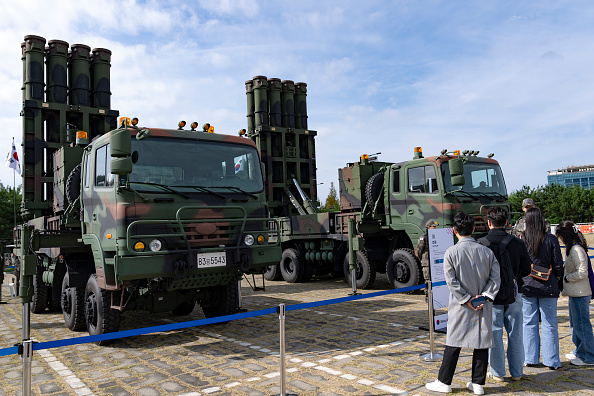The Korean Peninsula is on edge again. North Korea has flexed its muscles with a bold, new missile test — firing what it called a “cutting-edge” hypersonic weapon.
This wasn’t just-another launch. It was a high-stakes message, timed perfectly to rattle nerves barely a week before Trump’s visit to the region. Trump will touch down in South Korea on 29th October for the APEC summit after concluding a visit to Japan.
The latest test took place on 22nd October. North Korea is reported to have tested two projectiles. South Korea’s military spotted them flying about 350 kilometres before they slammed into a target inside North Korea. Kim Jong-un was not reported to have attended the latest launch though. A South Korean academic Yang Moo-jin told French news agency A.F.P. that Kim’s absence from the launch may indicate that Pyongyang was seeking to tone down its impact, coming as it did just days before the APEC summit.
The test came close on the heels of North Korea parading on 10th October, what looked like, short-range ballistic missiles with hypersonic capabilities. Incidentally, the Chinese Premier attended the parade.
The latest test had many firsts to its credit. It was the first launch of ballistic missiles by North Korea since the month of May. And it was the first such launch since Lee Jae-myung was elected President of South Korea.
A hypersonic missile can fly at five times the speed of sound, that is more than 6,000 kilometres per hour — faster than defences can react. But here’s the scary part: Unlike a regular missile that arcs predictably, a hypersonic missile can twist and turn mid-flight — making it harder to track and intercept.
Now, it’s not the first time North Korea has tested a hypersonic weapon. They’ve been testing these since 2021. But it’s got everyone watching because it is an exclusive club. India, China, Russia and the U.S. have developed and tested hypersonic missiles. Other countries such as France, Iran and North Korea have developed some form of hypersonic technology.
Nuclear-armed North Korea has steadily upgraded its missile capabilities over the past decade, defying multiple United Nations sanctions. It has test-launched long-range ballistic missiles that can potentially hit the U.S. mainland, if fired at a trajectory calibrated for that purpose.
How will the test affect North Korea’s relations with the U.S.? Now that’s a million-dollar question. On the face of it, the U.S. has condemned the test. The United States Forces Korea, which comes under the U.S.’ Indo-Pacific Command, described it as unlawful and destabilising. It called on North Korea to refrain from further acts in violation of the U.N. Security Council resolutions. But U.S. officials have been reported to have discussed at least privately about a Trump — Kim meeting.
So, is a Trump — Kim summit on the cards? Trump sure thinks so. Just last month, he told journalists that he’d like to meet Kim. For its part, Seoul has said that a meeting between Washington, D.C. and Pyongyang cannot be ruled out. In an interview to C.N.N., South Korea’s President Lee Jae-myung hoped that Kim and Trump will be able to engage in dialogue. As for Kim, he’s signalled openness, too. The North Korean leader said last month that he had fond memories of Trump and was open to talks if Washington, D.C. dropped its “delusional” demand that he give up his nuclear weapons.
Kim met Trump three times for high-profile summits during the U.S. leader’s first term — Singapore in 2018, Vietnam in 2019 and Panmunjom in the Joint Security Area at the border between the two Koreas, also in 2019. Panmunjom is the only place where soldiers from the two Koreas face each other on a regular basis. However, talks collapsed over just how much of its nuclear arsenal the North was willing to give up and what Pyongyang would get in return; North Korea won’t give up its nuclear weapons and the U.S. won’t let up on sanctions until complete denuclearisation.
In the face of provocations from the North, South Korea is not sitting idly by. In a direct response to the latest test by North Korea, South Korea made two moves. First, it announced that it will begin deploying the Hyunmoo-5 a.k.a Monster Missile. It tips the scales at 36,000 kilogrammes and packs an 8,000-kilogramme bunker-buster warhead that can pulverise underground hideouts. Seoul plans to deploy it by the year-end. And second, South Korea just unveiled a new attack submarine.














